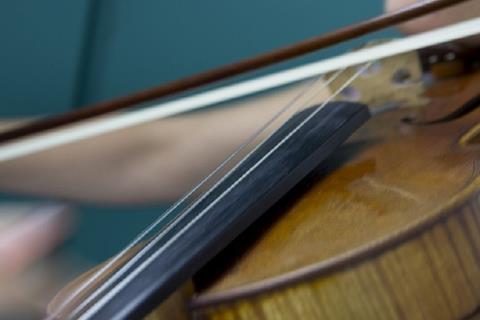The Strad's panel of experts answer string teaching questions from readers as part of our Teacher Talk series

Bruno Giuranna: I inform my students that one of my constitutional rights is to be able to see in front of me someone bowing straight with the whole bow, from frog to tip. I encourage the use of two mirrors when practising. Bow not straight? No lesson. The results are exceptional.
Mimi Zweig: For initial quick progress, I use the martelé stroke. The bow is the most important component of what we do, and the martelé stroke gives the student the possibility to understand how to push and pull the string, keeping the awareness of its three dimensions. On the down bow we envision pulling the string from the left side and on the up bow we imagine pushing the string, allowing for the maximum amount of vibration. The martelé stroke is introduced to beginners in the first lessons with the bow in a preparatory piece for Twinkle, Twinkle Little Star: A–E–A–rest; A–E–A–rest. The martelé is played in the upper half of the bow, releasing the forearm. The student listens for the ring and has the sense that the work happens on the beginning of the note and the rest of the note is a given. We will later introduce slurs, initially with martelé, and a two-octave G major scale playing two, three, four, five, six, seven, eight and finally fifteen notes per bow.
Read: 7 warming up and cooling down exercises for musicians
Read: Technique: 'Speedrunning'
Bonnie Hampton: This might not be called a ‘powerful’ exercise: it is simply a way of playing scales and arpeggios. Attention should be on hands and arms feeling very relaxed, and intonation being clear and true. The weight is in only one finger at a time, with the rest of the hand relaxed. The bow is making good, free contact with the string, producing an open, vibrant tone. Just checking that one is feeling one’s flexibility and hearing the quality of sound brings one’s attention to working ‘with’ the instrument.
Boris Kuschnir: Many students play ricochet by throwing the bow on the string so that they have no control over the sound of every note and can only play a very short ricochet. My advice is to move only the wrist with a very quick kick downwards – not with the fingers, or the elbow. This exercise immediately makes the ricochet longer and improves the quality of each note.
THE EXPERTS:
Bruno Giuranna teaches viola at the Fondazione Stauffer in Cremona, the Conservatorio della Svizzera Italiana in Lugano and the University of Limerick in Ireland
Bonnie Hampton was formerly on the faculty at Juilliard School, teaching cello in both the college and pre-college divisions
Boris Kuschnir is violin professor at the Vienna Conservatoire and at the University of Music in Graz
Géza Szilvay isiolinist and co-author of the Colourstrings teaching method
Mimi Zweig is professor of violin and viola and director of Pre-College Strings at Jacobs School of Music, Indiana University at Bloomington
Our Teacher Talk series was first published in The Strad in January 2011


































No comments yet